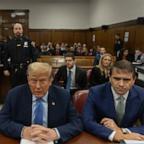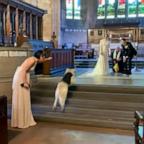'Nightline' Playlist: John Mellencamp
A music legend in his own right, Mellencamp says other rock icons influence him.
Nov. 19, 2010— -- All it takes is a quick listen to John Mellencamp's latest album, "No Better Than This," to get a sense of who has influenced his music.
He started writing the album while he was on the road.
"I was going on tour with [Bob] Dylan and I looked at our schedule, and I noticed that we were passing by some pretty historic places," said Mellencamp in a recent interview with "Nightline" at famed gallery bar, Le Poisson Rouge in New York.
Mellencamp decided to make use of the stops he and Dylan were making on tour and weave them into his songs.
"I noticed that we were passing by Memphis," Mellencamp said. "I had a couple days off so I thought, 'Well, that's obvious: Let's go to Sun. Let's see if we can get into Sun."
Watch the full story on "Nightline" tonight at 11:35 p.m. ET
"Sun" is Sun Studio in Memphis, Tenn., known as the "birthplace of rock and roll" because artists such as Elvis Presley, Johnny Cash, Carl Perkins and Roy Orbison all got their starts recording there.
Mellencamp ended up recording nine tracks at Sun.
He also recorded songs at the First African Baptist Church in Savannah, Ga., where both he and his wife were baptized.
"We were playing on the place where they delivered the sermons and, you know, this is the first black church in America," he said.
"The real reason why I wanted to use it [is that] it was a very big part of the Underground Railroad," he said. "Underneath the church are all these tunnels where people would hide for six, seven days in unbearable heat."
Mellencamp also recorded at the Gunter Hotel in San Antonio, Texas, where blues legend Robert Johnson recorded in the 1930s.
"I was actually able to sit in the exact same corner that Johnson had sang in," Mellencamp said. "I have to say it's the best sounding corner I ever sat in my life."
The rock legend also described how it wasn't just where he recorded this album that he paid such attention to, but also how he recorded it.
"I had the idea that I should record it in mono," he said. "We found an old field Ampex recorder from like 1950 and recorded on a 1940s microphone, and the mic sat right here in the middle of the room and everybody just kind of stood around. And we all just kind of played to that one microphone, and the effect of it was very authentic."




